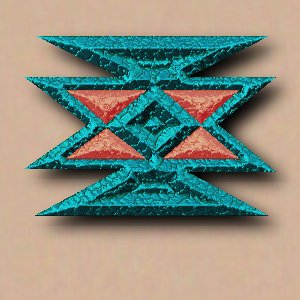









Welcome to Ishaia's Tutorials
Easy Text Buttons
This tutorial is for Paint Shop Pro 7 for Windows, and assumes a basic working knowledge of the program. If you have any problems or questions about this tutorial, e-mail me. I'll try to help if I can.
- Open a new image, 100 pixels wide x 55 pixels high. Set background at "Transparent", Image Type at "16.7 million colors (24 bit)" and leave resolution at 72 pixels per inch. Click OK.
- Don't worry about the checked background. If you truly hate it, go to File--> Preferences--> General Program Preferences. Click on the "Transparency" tab, click on the arrow next to "Scheme" under "Grid Colors", click on "None (White)", then click OK. Poof! background grid is gone!
- Click on the "text" tool (the letter "A"). Click on the little black arrow on the "Styles/Colors" swatch. Click on the "Solid" choice (looks like a paintbrush). Repeat for the next swatch down. Click in the color swatch area for "stroke" (the top swatch), select white (or some other color), then click in the "fill" swatch and again select white (or some other color).
Note: if you use BladePro, the background color might affect the end result, which is why I suggest white.
- Place the mouse pointer somewhere in the middle of your image window. The pointer should show an "A" next to a +. Click once.
- The text window should pop up. Type the text you want, then adjust the font, bold, italic and size until it looks the way you want it. Make it centered, create as vector, antialias checked. Click OK.
- Convert the text to a raster layer. Layers--> Convert to Raster Layer.
- The text may be difficult to read, so select your background layer, and floodfill with a different color. First select the background layer. Layers--> Layer 1 (at the bottom of the menu). Click on the flood fill tool (looks like a paint can tipping). Again, change the swatches to solid and select color of your choice (NOT white). Return to the image window, and left- or right-click to flood background with chosen color.
- Return to the text layer (Layers--> Layer 2), then click on the "magic wand" tool (looks like, well, a magic wand). Click directly on the text, be careful to add any/all unconnected text bits (the "." over an "i", apostrophes, separated letters, etc.) to the selection. To add separate bits to a selection, hold the shift key then click on the next bit.
- Once all text pieces are properly selected, apply preferred filter/effect. Alternatively, floodfill with chosen color/texture, then play with the effects, like noise, 3D effects, artistic effects, etc. I've got the BladePro plug-in, so I use solid white text, then apply effects within BladePro before returning to the PSP screen. After you finish fiddling with the text, turn off selection (Selections--> Select None).
- Once you have an effect you like, you can add a drop shadow (Effects--> 3D Effects--> Drop Shadow) for more of a 3D look. *DO NOT* select the image, as this causes a "ghost" around the edge of the text. Just be sure that the text layer is selected, then apply the drop shadow.
- Turn off visibility of the background by pointing to the Layer Palette, clicking on Layer 1, then click on the eyeglasses on Layer 1 to turn off visibility of the layer.
- Export the image as a .gif to retain the transparent background. File-->Export-->GIF Optimizer...--> Use Wizard--> Use existing transparent areas (hit Next)--> Click inside the color swatch to select an appropriate color to match your page background (click OK, then hit Next)--> No, choose the best colors (hit next)--> Push slider up near top for a small image, lower down for a larger one (hit Next)--> The image will render with a gray and white checked background, and the file size in bytes. If the file size is too big, hit the back button and move the slider lower. If you like the look, hit Finish. Give the file a name, and put it in the directory you want.
- Now, make a test page with your preferred background and code in the new image to see how it will look. If you like it, repeat all the steps for your other buttons. If not, you've only spent a couple minutes on one image that didn't work, rather than a bunch of time on a whole set that don't look right.
Big Hint 1: write down all the steps and settings as you go when you experiment so you'll know how to duplicate good images.
Big Hint 2: Work on the biggest image first, so everything else will be the same size as the big one, rather than trying to fit the biggest one into a space that is much too small.
Whew! It's a lot of info, but I hope it's helpful!

Note: if you use BladePro, the background color might affect the end result, which is why I suggest white.
Photos
| Drawings
| Mandalas
| Wallpapers
| Tutorials

Lodge
| Ishaia
| Gallery
| Gracias
| Joy
Library
| Links
| Rings
| Spirit
| E-mail
Sign or View my Guestbook
Lodge
| Ishaia
| Gallery
| Gracias
| Joy
Library
| Links
| Rings
| Spirit
| E-mail
Sign or View my Guestbook
Library | Links | Rings | Spirit | E-mail
Sign or View my Guestbook

